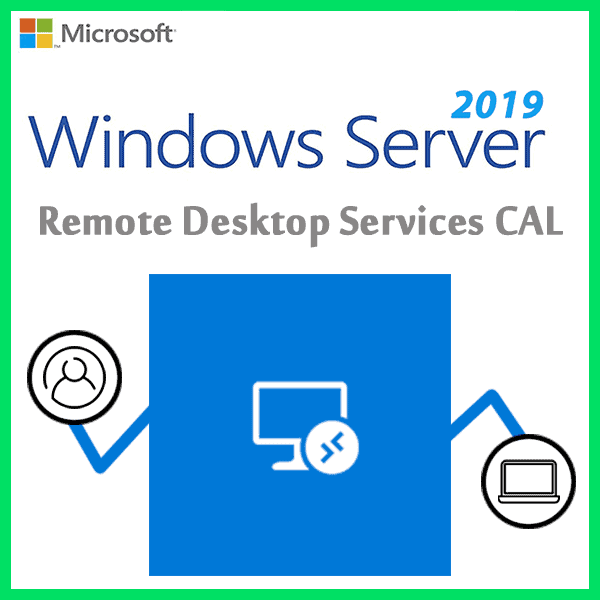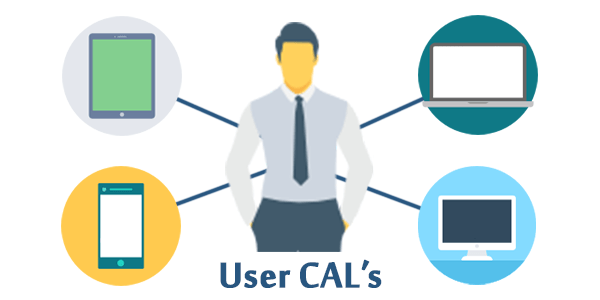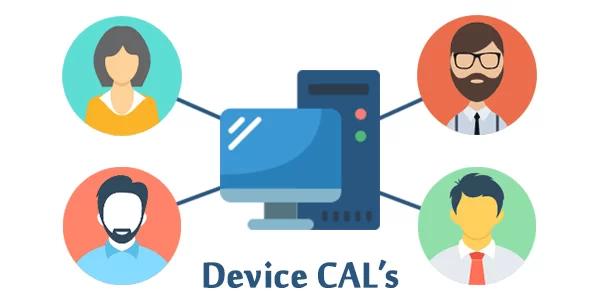Windows Server 2019 Remote Desktop Services CALs
- Securely connect remote users
- Users can get access from managed or unmanaged devices
- Connect to session-based or virtual-machine based desktops
- Use datacenter apps within corporate networks or from the internet
Please note that this key will add Remote Desktop Services CAL to your existing Pre-Activated Windows 2019 Server. It cannot be used to Activate your Windows 2019 Server.
What you will get?
- Windows Server 2019 Remote Desktop Services CALs License Key
- Warranty Period: 1 Month
- Live Chat support & assistance

18.00 $ – 45.00 $
Brand
Microsoft
Licensing Type
Retail
Licensing Term
Lifetime / One Time
Users Supported
50 User
Devices Supported
50 Device
Delivery Method
Digital Instant Delivery
Platform Supported
Windows Server
WHAT IS REMOTE DESKTOP SERVICES FOR WINDOWS SERVER 2019
Windows Server 2019 Remote Desktop Services CAL is part of the flexible licensing system for Windows Server 2019. It will give customers the opportunity to leverage fantastic enhancements that make it the optimal version of RDS, to date, with several areas of innovation to improve the administrative and client experiences.
This Version ” RDS 2019″ brought innovation centered around three areas: Simplify IT management, User experience, and Improved security.
What is Remote Desktop Services?
RDS stands for “remote desktop services” and refers to the functionality enabling users to work with graphic desktop and Windows applications via remote access. Desktop networks can be managed centrally using the appropriate client access licences (CALs). In addition, any potential Windows Server 2016 Core licenses already in existence can be used in combination with the 2019 device licenses. This gives the IT department in a company more time to transition to the latest version of the server operating system. The “Express Updates” function will also help save time installing updates in future.
Do I need a Client Access License?
A client access license (CAL) is needed for each user and device that connects to a Remote Desktop Session host. An RDS licensing server is needed to install, issue, and track RDS CALs. When a user or a device connects to an RD Session Host server, the RD Session Host server determines if an RDS CAL is needed.
THE DIFFERENCE BETWEEN USER CAL AND DEVICE CAL
License your deployments with Device or User Client Access Licenses
Each user or device accessing a licensed Windows Server requires a Windows Server CAL or a Windows Server and a Remote Desktop Services (RDS) CAL.

Remote Desktop Services User CALs
It allows a user to establish a Remote Desktop session on a Remote Desktop session host server. Regardless of the number of devices that the user uses to log in.

Remote Desktop Services Device CALs
It allows a specific device to establish a Remote Desktop session on a Remote Desktop session host server. Regardless of the number of users connecting from of this device.
FEATURES AND BENEFITS
Simplify IT management
Microsoft has time and again heard from customers that license management should focus on simplification to scale deployments. Therefore, it has focused on improving management of Remote Desktop (RD) Licensing servers and entitlement through Active Directory (AD).
- Now, you will be able to leverage high availability RD Licensing servers with forward-compatibility for future versions of Windows Server to enable easier management of licenses from a variety of RDS releases.
- It has become easier to manage licenses for your employees by bringing the ability for the RD Licensing servers to update RDS user Client Access Licenses (CALs) into AD objects without accessing AD directly.
- Lastly, perfmon (Performance Counters) APIs have been added to provide partners an easy way to access data to build monitoring dashboards and deliver a consistent user experience.
User experience
Microsoft has also invested in providing an enhanced user experience where end users will be able to leverage desktops and apps through RDS 2019 to maximize productivity.
- Modern notifications for RemoteApp in the Action Center to improve productivity with applications like Microsoft Outlook.
- They have improved upon innovations in Discrete Device Assignment in RDS 2016 to bring better security, virtual machine (VM) isolation, and performance for your graphic-intensive workloads. These improvements in GPU virtualization technologies will result in reduced network traffic and smooth video playback.
- In addition to the GPU virtualization technology, they added high-level redirection of built-in or attached video cameras to deliver optimized video stream at higher frame rates in new and legacy remote applications and desktops. Users can now have a better experience with video-intensive interactions.
- Reduced CPU usage on the client and server and bandwidth with better image quality to bring a faster end-to-end web client experience.
Security
One of Microsoft primary goals as the Remote Desktop Services product team is to help improve your security posture for your desktop and app virtualization environments. They have improved security through several enhancements.
- With Windows Admin Center integration, it is easy to consolidate all local and remote server management into a single pane.
- Several Windows Defender optimizations for multi-session to give you more confidence. In bringing a secure, scalable and cost-effective desktop experience to end users.
- Web client support for Single Sign-on (SSO) to deliver a streamlined authentication experience for users connecting via the web client.
- A few additional features include easy-to-configure DTLS-based encryption, all of which, work toward providing a trusted end-to-end RDS deployment.